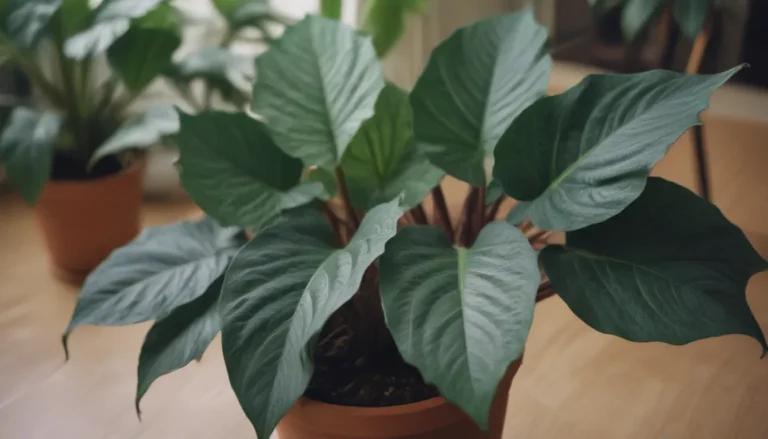How to Properly Water Your Peace Lily

Peace lilies (Spathiphyllum) are beloved for their lush, dark green leaves and beautiful white flowers. They are a popular choice for indoor plants due to their ability to thrive in low-light conditions, making them a great option for homes or offices with limited natural light. While peace lilies are generally easy to care for, proper watering is crucial to their well-being. In this comprehensive guide, we will explore the ins and outs of watering your peace lily to ensure it remains healthy and vibrant.
The Importance of Proper Watering
Peace lilies are tropical plants that naturally thrive in humid environments. When grown as houseplants, they require consistent moisture to mimic their natural habitat. Overwatering or underwatering can both have negative impacts on the health of your peace lily. By understanding the signs of overwatering and underwatering, you can adjust your watering routine to meet the needs of your plant.
Signs Your Peace Lily Is Overwatered
- Yellowing leaves
- Soggy or moist soil
- Root rot
- Moldy or mushy roots
If you notice any of these signs, it’s crucial to adjust your watering schedule to prevent further damage to your plant.
Signs Your Peace Lily Is Underwatered
- Drooping or wilting leaves
- Dry, crispy brown edges on leaves
- Yellowing and browning of older leaves
- Rootbound growth
Underwatering can be just as harmful as overwatering, leading to stunted growth and poor flowering. By recognizing the signs of underwatering, you can quickly address the issue and promote healthier growth in your peace lily.
When to Water Your Peace Lily
Instead of sticking to a rigid watering schedule, it’s essential to monitor your peace lily’s soil moisture regularly. The key is to water your plant when the top inch or so of soil has dried out. Here are some indicators that your peace lily is ready for watering:
- Soil surface appears lighter in color
- Pot feels lighter when lifted
- Top inch of soil is dry to the touch
During the spring and summer months, when days are longer and temperatures are warmer, your peace lily will likely require more frequent watering. In contrast, the plant’s watering needs will decrease during the winter months when growth slows down.
Indoor vs. Outdoor Peace Lily Watering
Whether your peace lily is indoors in a container or outdoors in your garden, its watering requirements can vary. Here are a few factors to consider:
- Light: Plants exposed to more light will require more frequent watering.
- Temperature and Humidity: Warmer temperatures and low humidity levels can increase your plant’s water needs.
- Soil Type: Opt for a well-draining potting mix rich in organic matter to prevent waterlogging.
- Potting Container: The material of the container can impact how quickly the soil dries out. Terracotta pots may dry out more rapidly than ceramic or plastic pots.
By considering these factors, you can tailor your watering schedule to meet the specific needs of your peace lily, whether it’s indoors or outdoors.
Best Practices for Watering Your Peace Lily
To ensure optimal growth and avoid common watering pitfalls, here are some best practices to follow when watering your peace lily:
- Use room-temperature water: Cold water can shock your plant, while hot water may scald the roots. Opt for room-temperature water to avoid temperature extremes.
- Check the drainage: Ensure your pot has adequate drainage holes to prevent water from pooling at the bottom and causing root rot.
- Avoid fluoride: Peace lilies are sensitive to fluoride, which can cause brown tips on the leaves. Consider using rainwater or distilled water to prevent this issue.
- Be consistent: Establish a regular watering schedule based on your plant’s needs and stick to it to promote healthy growth.
By following these guidelines, you can provide your peace lily with the right amount of water to thrive and flourish.
Conclusion
Proper watering is essential for the health and vitality of your peace lily. By monitoring soil moisture, adjusting your watering schedule based on environmental factors, and following best practices, you can ensure that your plant remains happy and vibrant. Remember, each peace lily is unique, so it’s essential to observe your plant’s individual watering needs and make adjustments as necessary. With proper care and attention, your peace lily will continue to brighten up your home with its lush green foliage and elegant white blooms.
Peace Lily.Clemson Cooperative Extension. Indoor Plants—Watering.Clemson Cooperative Extension. Peace Lily.University of Illinois Extension. Care of Peace Lilies.South Dakota State University Extension.





